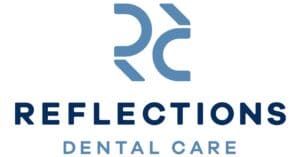When it comes to straightening your teeth and achieving a confident smile, you may find yourself considering two popular options: Invisalign and traditional braces. Both methods have their own set of advantages and disadvantages, and understanding them can help you make an informed decision. In this blog, we’ll explore the pros and cons of Invisalign and braces, allowing you to choose the orthodontic treatment that best suits your needs.
A straight and healthy smile can significantly impact your self-esteem and overall oral health. Both Invisalign and braces are effective tools for teeth straightening, but they differ in terms of methodology and aesthetics. Let’s take a look at the pros and cons of each option.
Understanding Invisalign
Invisalign is a teeth-straightening system that utilizes a series of clear, removable aligners custom-made for your teeth. These aligners are virtually invisible and gradually shift your teeth into the desired position over time. Generally, Invisalign aligners are replaced every few weeks to maintain progress.
Pros of Invisalign
- Aesthetics: Invisalign aligners are designed to be transparent and virtually invisible, which makes them highly appealing to individuals seeking a discreet treatment option.
- Removability: Unlike braces, Invisalign aligners are removable, allowing you to eat, drink, and brush your teeth without any restrictions. As you can imagine, this feature simplifies oral hygiene routines.
- Comfort: The smooth, custom-made aligners are designed to fit comfortably over your teeth, minimizing discomfort and irritation often associated with braces.
- Shorter Treatment Time: Invisalign treatment typically requires less time compared to traditional braces, with an average treatment duration ranging from 6 to 18 months.
Cons of Invisalign
- Compliance: Invisalign aligners must be worn for at least 20 to 22 hours per day for optimal results. Failure to comply with the recommended wear time may prolong the treatment process.
- Not Suitable for Complex Cases: Invisalign may not be the best option for severe or complex orthodontic issues, such as significant overcrowding or bite abnormalities. Your orthodontist will assess your case to determine suitability.
- Requires Responsibility: Since the aligners are removable, the responsibility lies with the patient to wear and care for them properly. Misplacing or forgetting to wear the aligners may hinder progress.
Exploring Traditional Braces
On the other hand, traditional braces consist of metal brackets that are bonded to the teeth and connected by archwires. These wires are periodically adjusted to gradually shift the teeth into the desired alignment. Additional components such as elastics and bands may be used to address specific issues.
Pros of Traditional Braces
- Effective for Complex Cases: Traditional braces are highly effective in treating a wide range of orthodontic concerns, including severe misalignment, overcrowding, and bite issues.
- Reliability: Once the braces are placed, you don’t have to worry about compliance or aligner replacement. They work continuously to straighten your teeth throughout the treatment duration.
- Customizable: Traditional braces can be customized with colored bands or brackets, allowing for individual expression and personalization.
Cons of Traditional Braces
- Aesthetics: Traditional braces are visible and can be noticeable, which may be a concern for individuals seeking a more discreet treatment option.
- Dietary Restrictions: Certain foods, such as sticky or hard substances, need to be avoided to prevent damage to the brackets or wires.
- Oral Hygiene Challenges: Cleaning around the brackets and wires requires extra effort and attention to maintain proper oral hygiene. Specialized tools, such as floss threaders, may be necessary.
Making Your Decision
Choosing between Invisalign and traditional braces depends on various factors, including the complexity of your case, your aesthetic preferences, and your lifestyle. Rather than struggling with the debate yourself, consult with an experienced orthodontist who can evaluate your specific needs and guide you toward the most suitable treatment option.
Invisalign and traditional braces are both effective methods for achieving a straighter smile. Invisalign offers a more discreet and flexible approach, while traditional braces excel in treating complex orthodontic issues. By considering the pros and cons outlined in this blog and seeking professional advice, you can make an informed decision that aligns with your orthodontic goals.
Whether you choose Invisalign or traditional braces, our Dental Clinic in OKC, OK will provide the exceptional care you need for a straighter and healthier smile.
Invisalign or Braces? The Right Choice for Your Smile!
Decide which treatment is right for you with expert guidance from Reflections Dental Care. Whether it’s Invisalign or braces, we’ve got you covered. Call us today at (405) 751-4556 to schedule your consultation!


